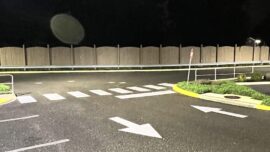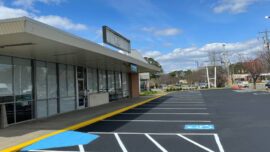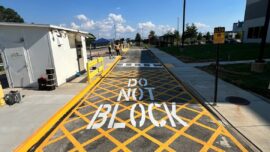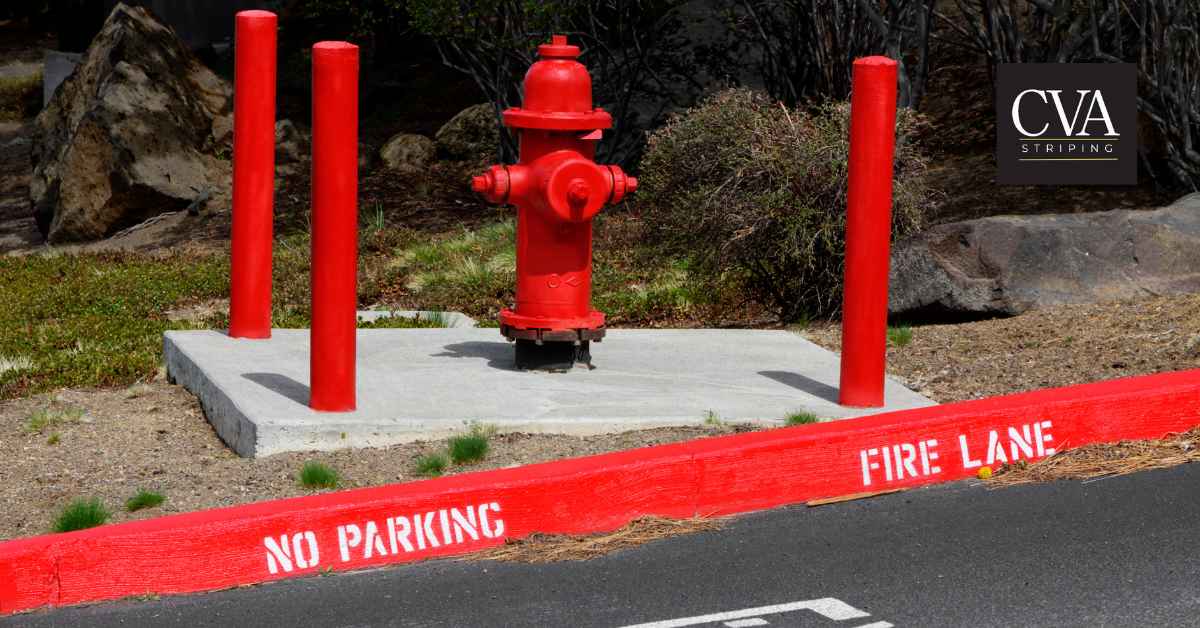
Essential Firelane Line Striping Requirements: Ensuring Safety and Compliance
Fire lanes are vital for the safety and accessibility of emergency services, acting as lifelines in critical situations. By understanding and maintaining firelane line striping requirements we ensure that emergency vehicles can reach incidents swiftly and efficiently, potentially saving lives.
This blog will guide you through the essential aspects of fire lanes, including their purpose, signs, and maintenance. Proper fire lane management is crucial for community safety and compliance with regulations.
What is a Firelane and Why Are They Crucial for Safety?
A fire lane is a designated area that must remain clear for emergency vehicles, usually marked by fire lane signs and fire lane stencils. These lanes are crucial for:
- Providing quick access during emergencies, allowing emergency responders to reach the scene without delay.
- Minimizing response times, which can be critical in preventing the escalation of incidents.
- Potentially saving lives by ensuring that emergency vehicles can navigate to and from the emergency site efficiently.
Firelane Line Striping Requirements
Fire lane signs in Richmond, VA are essential for indicating where parking is prohibited, ensuring that fire lanes remain clear for emergency vehicles. These signs play a critical role in maintaining the accessibility and functionality of fire lanes, which are vital for quick emergency response.
No Parking Fire Lane Signs
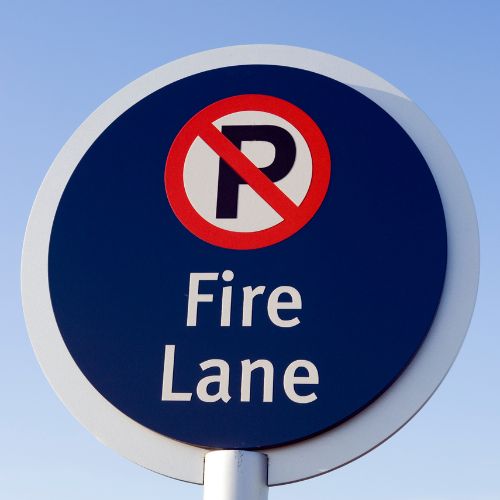
No parking fire lane signs are crucial for keeping fire lanes unobstructed. These signs clearly inform drivers that parking in these areas i
s illegal a
nd could block emergency access. They are typically placed at regular intervals along the fire lane and at key entry points to ensure visibility. The presence of these signs helps prevent u
nauthorized parking, which can delay emergency response times and put lives and property at risk. Additionally, no parking fire lane signs often include information about the penalties for violations, such as fines or towing, to deter potential violators.
Fire Lane Stencil
A fire lane stencil is used to mark the pavement, indicating the fire lane’s boundaries. These stencils are usually painted in bright, reflective colors like red or yellow, making them highly visible both day and night. Clear and visible stencils help drivers recognize and avoid parking in these critical areas. The stencils often include the words “FIRE LANE” or “NO PARKING FIRE LANE” to reinforce the message. Properly maintained stencils ensure that the fire lanes are always visible, even in adverse weather conditions or low light.
Fire Lane Signage with Reflective Material
Fire lane signage with reflective material enhances visibility, especially during nighttime or low-light conditions. These signs are made with high-intensity reflective sheeting that catches and reflects light, making them easily noticeable to drivers. Reflective fire lane signs are often used in conjunction with stencils to provide clear, unmistakable indicators of fire lane boundaries.
Pavement Markings
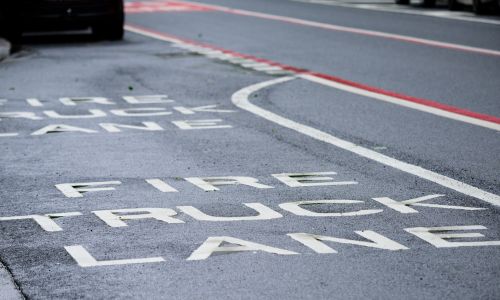
Pavement markings are another type of fire lane indicator that complements signs and stencils. These markings typically consist of painted lines, arrows, and other symbols that delineate the fire lane. Pavement markings are often used in areas with high traffic to provide additional guidance and ensure that fire lanes are kept clear. They can include words like “FIRE LANE” or directional arrows to indicate the designated area.
Curb Markings
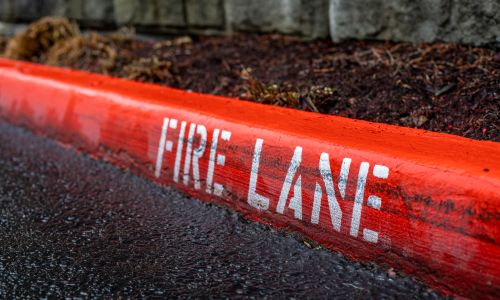
Curb markings involve painting the curbs adjacent to fire lanes, usually in bright colors like red or yellow, to indicate no parking zon
es. These markings are highly visible and serve as a continuous reminder to drivers not to park in fire lanes. Curb markings are especially useful in areas where signage alone might not be sufficient to prevent unauthorized parking.
Vertical Signage
Vertical signage includes poles or posts placed at intervals along the fire lane with signs mounted at a height visible to drivers. These signs can be more detailed, including messages like “Fire Lane – No Parking – Tow Away Zone,” providing clear instructions and consequences for violations. Vertical signage ensures that the fire lane designation is visible from a distance and from various angles.
Key Firelane Line Striping Requirements
Understanding and implementing key fire lane requirements are essential for safety and compliance. Proper design and maintenance ensure that fire lanes are functional and accessible in emergencies.
Fire Lane Access Requirements
Fire lane access requirements ensure that emergency vehicles can easily reach buildings and hydrants. These requirements include:
- Maintaining a clear path free of obstructions.
- Ensuring adequate space for emergency vehicles to maneuver.
- Keeping access roads within 150 feet of all exterior walls of the first story of a building.
Fire Lane Code Requirements
Fire lane code requirements dictate the dimensions, signage, and maintenance necessary to keep fire lanes functional and compliant. Key elements include:
- Specified widths based on roadway type and usage.
- Proper fire lane striping and no parking fire lane signs.
- Regular inspections to maintain compliance with local fire lane regulations.
Vertical Clearance and Surface Requirements
Fire lanes must have a minimum vertical clearance to accommodate emergency vehicles, typically at least 14 feet. The surface of fire lanes must be durable and capable of supporting the weight of emergency vehicles, which can be up to 80,000 pounds. Acceptable surfaces include asphalt, concrete, or approved alternatives.
Turning Radius and Grade Specifications
Fire lanes should have a turning radius that allows emergency vehicles to maneuver easily. The turning radius should typically be at least 30 feet. Additionally, the grade of the fire lane must be manageable, generally not exceeding a 10 percent slope, to ensure large vehicles can navigate safely.
Bridges and Elevated Surfaces Standards
Bridges and elevated surfaces within fire lanes must support the weight of emergency vehicles and have appropriate signage and markings. These structures should meet the same load-bearing requirements as standard fire lanes and provide clear indications of their capacity and boundaries.
Gates and Turn-Around Areas Regulations
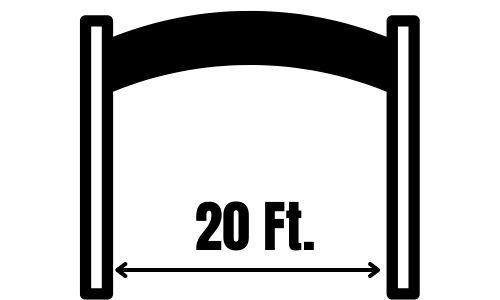
Gates should not obstruct fire lanes and must allow quick access for emergency vehicles. Specific requirements include:
- Minimum gate widths of 20 feet.
- Gates constructed from materials that allow manual operation by one person.
- Electric gates equipped with emergency opening mechanisms, such as the Knox Rapid Entry System.
- Turn-around areas are required for dead-end lanes exceeding certain lengths to ensure vehicles can exit easily.
How Are Fire Lanes Maintained and Kept in Compliance?
To keep fire lanes compliant with fire lane code requirements and ensure the safety and efficiency of emergency services, you should focus on several key maintenance tasks:
- Repainting Fire Lane Striping
Regularly refreshing the paint helps keep the fire lanes clearly visible, even in low light conditions. - Replacing Faded or Damaged Signs
Make sure all fire lane signs are legible and in good condition to effectively communicate the no parking restrictions. - Verifying Proper Width
Regularly measure and confirm that fire lanes meet the required width standards to accommodate emergency vehicles. - Clearing Debris and Obstacles
Keep fire lanes free from any obstructions to maintain unobstructed emergency access. - Educational Campaigns
Implement ongoing education and awareness programs to inform residents and businesses about the importance of keeping fire lanes clear.
Final Thoughts on Ensuring Safety and Compliance through Proper Firelane Line Striping Requirements
Proper fire lane requirements play a crucial role in protecting lives and property. When communities understand fire lane access requirements and maintain clear fire lanes, they significantly improve emergency response times and enhance overall safety. By adhering to these regulations, we create safer environments and reduce the risks associated with delayed emergency responses. We hope you find this information helpful and take the necessary steps to keep your fire lanes compliant. If you want professional help, trust CVA Line Striping LLC to assist you in maintaining effective fire lanes. Contact us today to ensure your community’s fire lanes are always ready for any emergency.
Firelane Requirement FAQs
What Are the Standard Dimensions for Fire Lanes?
Standard dimensions for fire lanes typically range from 12 to 20 feet in width, depending on local regulations and the type of emergency vehicles.
How Often Should Fire Lanes Be Inspected?
Fire lanes should be inspected regularly, at least once a year, to ensure they remain clear and compliant with fire lane code requirements.
Who Is Responsible for Maintaining Fire Lanes?
Property owners and managers are generally responsible for maintaining fire lanes. They should ensure that fire lane striping, signs, and markings are up-to-date and compliant.
What Are the Common Penalties for Blocking a Fire Lane?
Penalties for blocking a fire lane can include fines, towing of the vehicle, and potential legal consequences. These measures ensure that fire lanes remain clear for emergency access.
How Can Communities Ensure Compliance With Fire Lane Regulations?
Communities can ensure compliance with fire lane regulations by educating residents, conducting regular inspections. Communities can also work with professionals like CVA Line Striping LLC to maintain clear and compliant fire lanes.

